Patrick Doetsch
A comprehensive study of batch construction strategies for recurrent neural networks in MXNet
May 05, 2017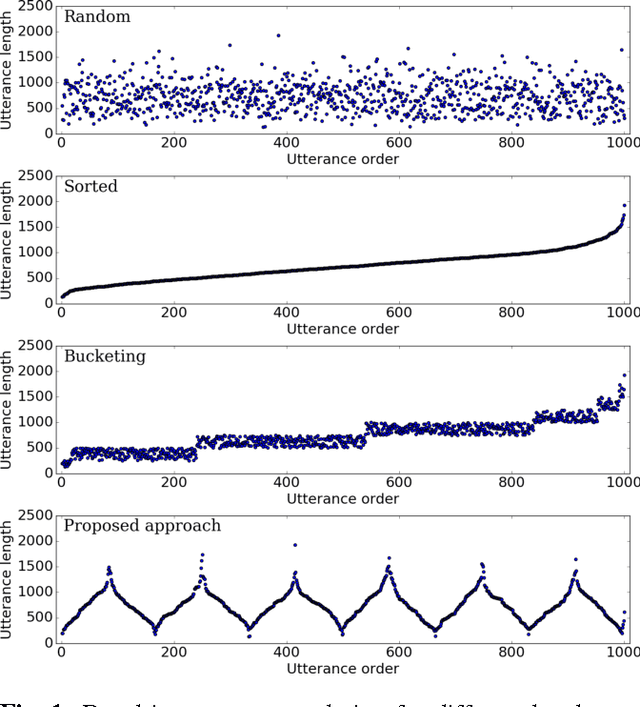

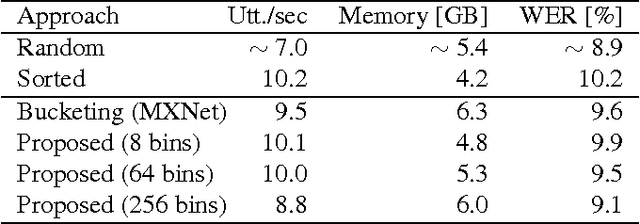
Abstract:In this work we compare different batch construction methods for mini-batch training of recurrent neural networks. While popular implementations like TensorFlow and MXNet suggest a bucketing approach to improve the parallelization capabilities of the recurrent training process, we propose a simple ordering strategy that arranges the training sequences in a stochastic alternatingly sorted way. We compare our method to sequence bucketing as well as various other batch construction strategies on the CHiME-4 noisy speech recognition corpus. The experiments show that our alternated sorting approach is able to compete both in training time and recognition performance while being conceptually simpler to implement.
A Comprehensive Study of Deep Bidirectional LSTM RNNs for Acoustic Modeling in Speech Recognition
Mar 29, 2017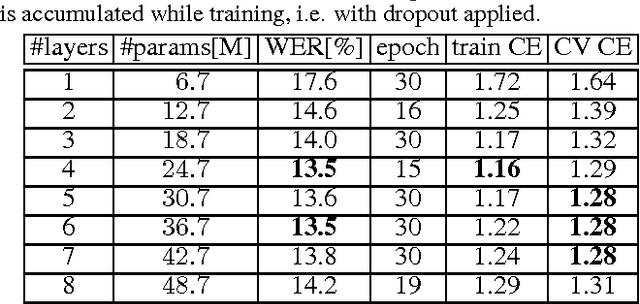

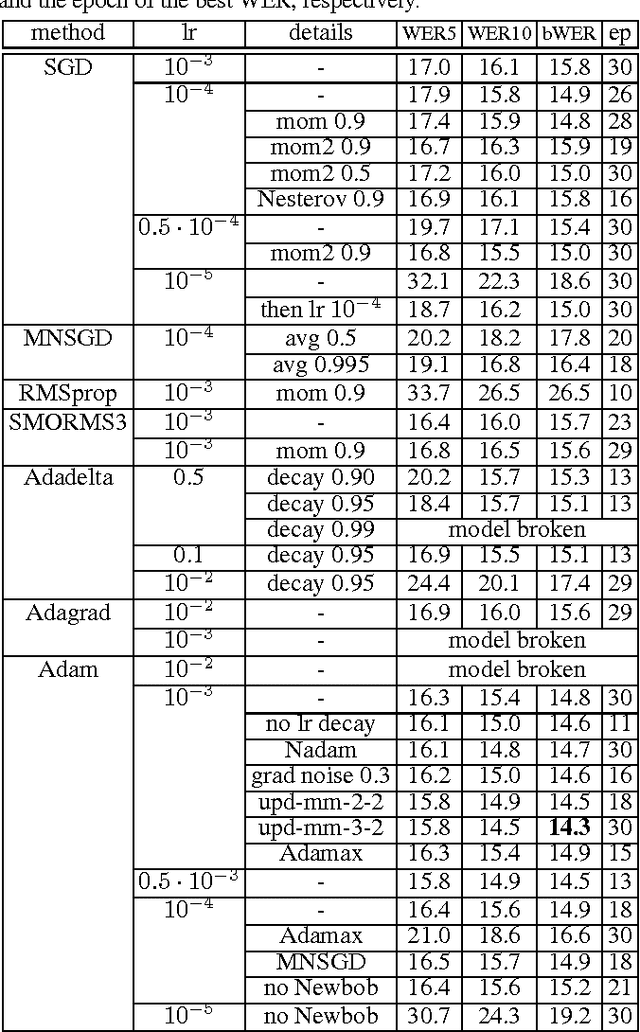
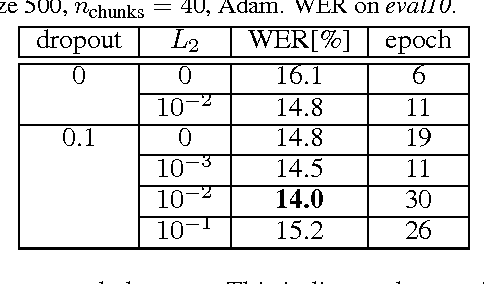
Abstract:We present a comprehensive study of deep bidirectional long short-term memory (LSTM) recurrent neural network (RNN) based acoustic models for automatic speech recognition (ASR). We study the effect of size and depth and train models of up to 8 layers. We investigate the training aspect and study different variants of optimization methods, batching, truncated backpropagation, different regularization techniques such as dropout and $L_2$ regularization, and different gradient clipping variants. The major part of the experimental analysis was performed on the Quaero corpus. Additional experiments also were performed on the Switchboard corpus. Our best LSTM model has a relative improvement in word error rate of over 14\% compared to our best feed-forward neural network (FFNN) baseline on the Quaero task. On this task, we get our best result with an 8 layer bidirectional LSTM and we show that a pretraining scheme with layer-wise construction helps for deep LSTMs. Finally we compare the training calculation time of many of the presented experiments in relation with recognition performance. All the experiments were done with RETURNN, the RWTH extensible training framework for universal recurrent neural networks in combination with RASR, the RWTH ASR toolkit.
RETURNN: The RWTH Extensible Training framework for Universal Recurrent Neural Networks
Jan 10, 2017

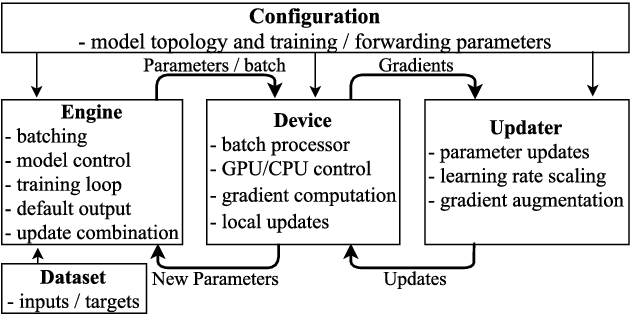
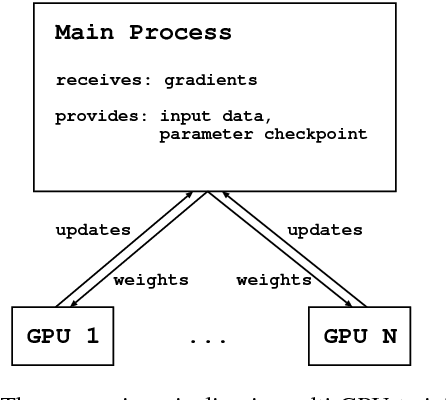
Abstract:In this work we release our extensible and easily configurable neural network training software. It provides a rich set of functional layers with a particular focus on efficient training of recurrent neural network topologies on multiple GPUs. The source of the software package is public and freely available for academic research purposes and can be used as a framework or as a standalone tool which supports a flexible configuration. The software allows to train state-of-the-art deep bidirectional long short-term memory (LSTM) models on both one dimensional data like speech or two dimensional data like handwritten text and was used to develop successful submission systems in several evaluation campaigns.
 Add to Chrome
Add to Chrome Add to Firefox
Add to Firefox Add to Edge
Add to Edge